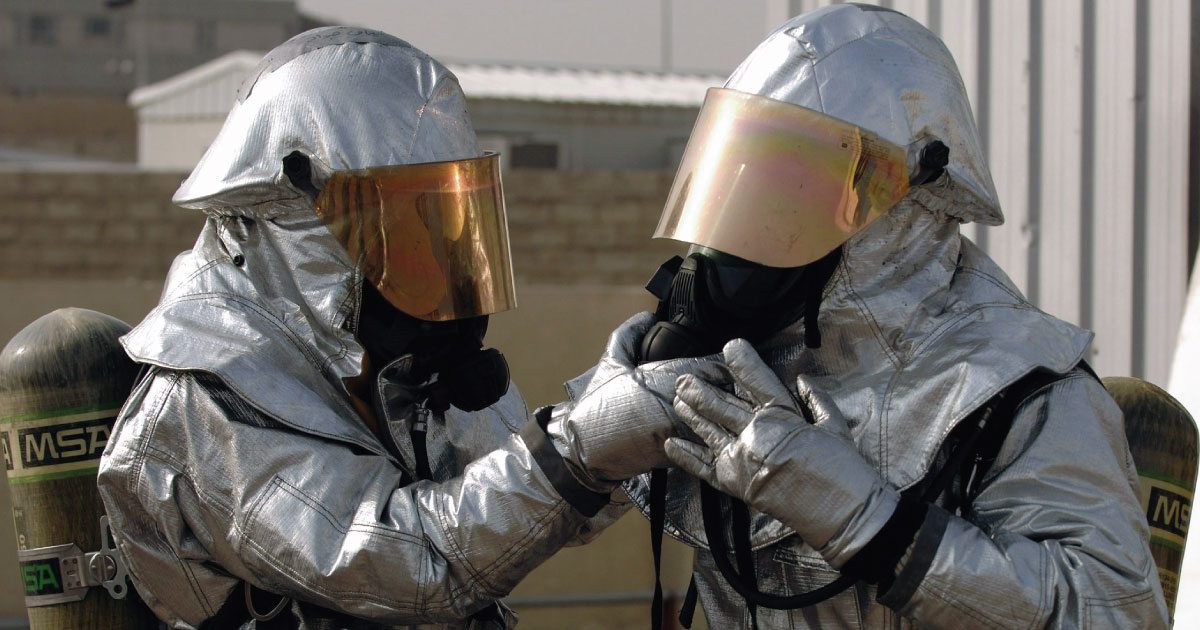Category: International News

FDA Approved Drug For Colon Cancer May Benefit Mesothelioma Patients
A drug that the U.S. Food and Drug Administration recently approved as a first-line treatment for patients with colorectal cancer may also be effective against mesothelioma, researchers say. Mesothelioma is a cancer of the lining of the chest and abdominal cavities and is closely linked to inhaling asbestos fibers.
Mesothelioma often resists standard treatments including the powerful chemotherapy drugs pemetrexed and cisplatin. Researchers in the United States and other countries continue seeking more effective therapies and ways to diagnose mesothelioma earlier when it is more treatable.
One signal that may alert doctors and medical researchers to the presence of mesothelioma at an early stage is epidermal growth factor receptor, a molecule that is overexpressed in many forms of cancer including mesothelioma, colorectal, breast and lung cancers.
The drug cetuximab, an anti-body, interferes with the function of EGFR and induces the death of cancer cells. Its effectiveness in treating certain types of colorectal cancer led the FDA to approve it as a first-line treatment in July. But cetuximab has not been well researched as a treatment for mesothelioma.
In a new study published online in August in the International Journal of Oncology, Japanese researchers report encouraging preliminary results suggesting that cetuximab may be an alternative therapy for patients who don’t respond to standard treatments. The researchers tested the effectiveness of cetuximab at arresting tumors on five lines of malignant pleural mesothelioma cells implanted into lab mice. They observed that cetuximab significantly impeded tumor growth and when applied directly to the chest cavity also improved the survival of the cancer-stricken mice.
The researchers concluded that the results “underscore the promising potential of cetuximab as a new class of therapeutic agent for use against malignant pleural mesothelioma.”
Approximately 2500 to 3000 Americans are diagnosed with mesothelioma each year. Most people diagnosed with mesothelioma are retired workers and veterans who were exposed to asbestos in a workplace or during military service decades ago. The most common form of the cancer is malignant pleural mesothelioma. Disease symptoms typically take 20 years to 50 years to appear.
Mesothelioma is as yet incurable, but there are treatment options including chemotherapy, radiation and surgery if the disease is diagnosed at an early stage.
Know more about mesothelioma and how you can deal with it.

Childhood Exposure to Asbestos Increases Disease Risk Broadly, Including Mesothelioma
Australian researchers offer additional evidence that exposure to asbestos early in life may lead to a variety of serious health issues in addition to mesothelioma and lung cancer.
A new study, published in the American Journal of Industrial Medicine, reports that adults who were exposed to crocidolite asbestos in early childhood have an elevated risk of a range of cancers and heart disease. All forms of asbestos cause cancer in humans, according to the World Health Organization. But this is the first study to investigate cancer incidence among adults exposed as children to crocidolite, also known as blue asbestos.
The researchers at Western Australia Institute for Medical Research analyzed the health data of approximately 2,500 people who grew up in Wittenoom, a now-abandoned mining town in Western Australia where crocidolite asbestos was mined for nearly 20 years.
The researchers observed that women raised in Wittenoom had a 70 to 113 times greater risk of developing mesothelioma, a cancer of the lining of the lung and abdominal cavity, than among the overall population. Men also showed an increased risk of developing mesothelioma as well as an increased risk of brain, colorectal and prostate cancer and leukemia.
The research also suggests a slightly elevated risk of heart disease. Another study from the United Kingdom also recently reported an increased risk of heart disease among those exposed to asbestos.
New York cancer researchers at Mt. Sinai Medical Center are conducting an ambitious study of thousands of people who grew up between 1950 and 1999 in Libby, Montana, then moved away. Lung function develops until a child reaches age 18. Examining the lungs of people who spent their childhoods in Libby and then left may have reveal how much damage occurs from asbestos in childhood, the New York mesothelioma researchers have said.
The federal government has declared a health emergency in Libby, where asbestos contamination was widespread from a vermiculite mine and hundreds have died from asbestos related disease.
Mesothelioma is an aggressive form of cancer and a signature disease of asbestos exposure. Approximately 2,500 to 3,000 Americans are diagnosed annually with the disease and a similar number die. The disease is incurable, though there are treatments including chemotherapy, radiation and surgery.
Most people diagnosed with mesothelioma are older workers, retired workers or veterans who were exposed to asbestos fibers in the workplace or military service. Microscopic asbestos fibers when inhaled can lodge in the lungs and remain there a lifetime causing inflammation that eventually leads to asbestos related disease.

Risk of Asbestos Exposure for Auto Mechanics of Recalled Chinese Cars
Auto mechanics and auto repair technicians have an elevated risk of developing mesothelioma, a form of cancer, because of exposure to asbestos during car repairs. A mineral fiber, asbestos is a recognized cause of cancer in humans caused by inhaling or swallowing asbestos fibers.
The use of asbestos is banned in some countries, but is still allowed in the United States for certain purposes. According to the National Cancer Institute, the automotive industry uses asbestos in vehicle brake shoes and clutches pads.
In Australia, an automotive importer recalled 23,000 Chinese-made cars this week after customs inspectors found asbestos in engine and exhaust gaskets, Australia’s consumer protection agency announced. Australia has prohibited the importation of asbestos since 2004.
According to a statement by the Australian Competition and Consumer Commission, customs and border protection officers detected asbestos in imported spare parts from China, prompting a safety investigation. Ateco Automotive, which imports cars made by Great Wall Motor Co., and Chery Automobile, ordered dealers to stop selling the affected vehicles and recalled gaskets that were distributed as spare parts.
The asbestos is bound into gaskets in the engine and exhaust system and does not present a risk to consumers using the vehicles, the consumer watchdog agency said. But consumers should not perform do-it-yourself maintenance that might disturb the gaskets, the agent warned.
“Asbestos is a prohibited hazardous substance and these engines and exhaust systems should only be worked on by qualified personnel using appropriate safety procedures,” said Della Richard, deputy chair of the Australian Competition and Consumer Commission.
While Australia now bans importation of asbestos, the widespread use of asbestos in more than 3000 products since the 1940s means that asbestos is present in many older buildings, houses and vehicles. Asbestos was used in kitchen tiles, roofing materials, and insulation around pipes and boilers. Cars sold in Australia before 2004 often had gaskets made of asbestos.
A Work Safe Australia report released last year found 660 new cases of mesothelioma were diagnosed in Australia and 551 deaths were attributed to the disease, in the most recent year of complete data.
In the United States, approximately 2,500 to 3,000 people are diagnosed with mesothelioma each year, and a similar number die of the disease annually. The disease is incurable, though there are treatments for mesothelioma including chemotherapy, radiation and surgery.
Most people diagnosed with mesothelioma are older workers, retired workers or veterans who were exposed to asbestos fibers in the workplace or military service decades ago. Microscopic asbestos fibers when inhaled can lodge in the lungs and remain there a lifetime causing inflammation that eventually leads to asbestos related disease.

Insulators Face Workplace Exposure to Asbestos, Declare War On Mesothelioma
Labor leaders for the International Association of Heat & Frost Insulators have declared war on mesothelioma, an asbestos-related cancer that affects many workers employed in the insulation industry. Insulators are at much greater risk of developing mesothelioma because of the long-time use of asbestos in many insulation products.
Nearly one out of every 10 insulators dies of mesothelioma, according to Dr. Andrew Todd, a professor of preventive medicine at Mt. Sinai Hospital in New York. Dr. Todd said the incidence of mesothelioma among insulation workers is about 1,000-fold higher than among the public at-large, based on 2008 statistics. Dr. Todd said the diagnosis of mesothelioma among insulators has remained very high for more than two decades, so the prevalence of asbestos disease is not decreasing.
At the International Insulators’ national convention in Las Vegas this month, convention delegates voted for every insulator in the U.S. and Canada to contribute four cents of each hourly wage they receive to fund research to find a cure for mesothelioma and to support a new Insulators’ Tissue Bank. The tissue bank will be a repository for asbestos-related tumor tissue donated by insulators affected by mesothelioma and asbestos-related disease. The Insulators’ Tissue Bank will be located and administered by the Mt. Sinai School of Medicine.
James A. Grogan, general president of the union, has advocated for increased attention on mesothelioma. According to a union press release, Grogan told delegates that the union now had a well-funded plan of attack against mesothelioma that emphasizes prevention and early detection and better medical care for insulators and their families. Grogan called upon insulators to donate tissue to the bank if they are treated for mesothelioma.
Asbestos was widely used as an insulation material for much of the 20th century and much of it remains in older houses and buildings. When the old insulation is torn out and replaced, workers may be exposed to asbestos dust. Therefore, insulators have an increased risk of occupational exposure to asbestos and of developing mesothelioma.When inhaled, microscopic asbestos fibers can penetrate deep in the chest cavity, remaining there for decades, causing inflammation, scarring and eventually disease.
Approximately 2,500 to 3,000 people die of mesothelioma each year in the United States. Symptoms of asbestos disease typically appear 30 to 50 years after exposure to asbestos.
More information about mesothelioma here.

International Epidemiology Panel Predicts Public Health Disaster of Asbestos-Related Disease
A committee of scientists from 13 epidemiology societies issued a statement this week calling for a global ban on mining, use and export of asbestos. The Joint Policy Committee of the Societies of Epidemiology put forward a position statement laying out clear evidence that all forms of asbestos cause mesothelioma, lung cancer and other diseases.
“Continued use of asbestos will lead to a public health disaster of asbestos-related illness and premature death for decades to come, repeating the epidemic we are witnessing today in industrialized countries that used asbestos in the past,” Dr. Stanley Weiss, chair of the Joint Policy Committee said in a statement.
The Joint Policy Committee coordinates policy actions among 13 U.S., Canadian and international epidemiology societies. The group’s 25-page statement details the latest scientific evidence about asbestos and expressed “grave concern” that the governments of Brazil, Canada, China, India, Indonesia, Russia, Sri Lanka, Thailand, Ukraine, Uzbekistan and Vietnam are putting their own citizens and others in peril by allowing asbestos mining.
Weiss said the committee considered it to be critically important to support the objective scientific evidence that all use of asbestos should stop. Most industrialized countries have ceased or sharply curtailed use of asbestos and more than 50 countries have passed laws banning its use. Consequently, the asbestos industry is working to establish new markets by promoting the use of asbestos in low to moderate income nations, which have weaker worker safety laws. Many of these countries are unaware of the health hazards posed by asbestos. The proportion of asbestos used in Asia has increased sharply.
“We call specifically on the major asbestos exporting countries—Brazil, Canada, Kazakhstan and Russia to respect the right to health by ceasing the mining, use and export of asbestos, and providing transition assistance to their asbestos-mining communities,” said Dr. Robert Hiatt, representing the American College of Epidemiology.
According to the World Health Organization, more than 107,000 people die each year from mesothelioma, lung cancer and asbestosis caused by workplace exposure to asbestos. Mesothelioma is a cancer of the lining of the chest cavity and abdominal cavity caused by inhaling asbestos. One in every three deaths from occupational cancer is estimated to be caused by asbestos.
In the United States, approximately 2,500 to 3,000 people are diagnosed with mesothelioma each year. Most are older workers, retired workers and veterans who were exposed to asbestos in a workplace.
The symptoms of asbestos disease typically take 20 years to 50 years to appear. But once the disease develops, it advances aggressively. Mesothelioma is incurable, but there are treatments to control the disease if it is diagnosed at an early stage.
More information about mesothelioma treatments.
Free Mesothelioma Patient & Treatment Guide
We’d like to offer you our in-depth guide, “A Patient’s Guide to Mesothelioma,” absolutely free of charge.
It contains a wealth of information and resources to help you better understand the condition, choose (and afford) appropriate treatment, and exercise your legal right to compensation.
Download Now